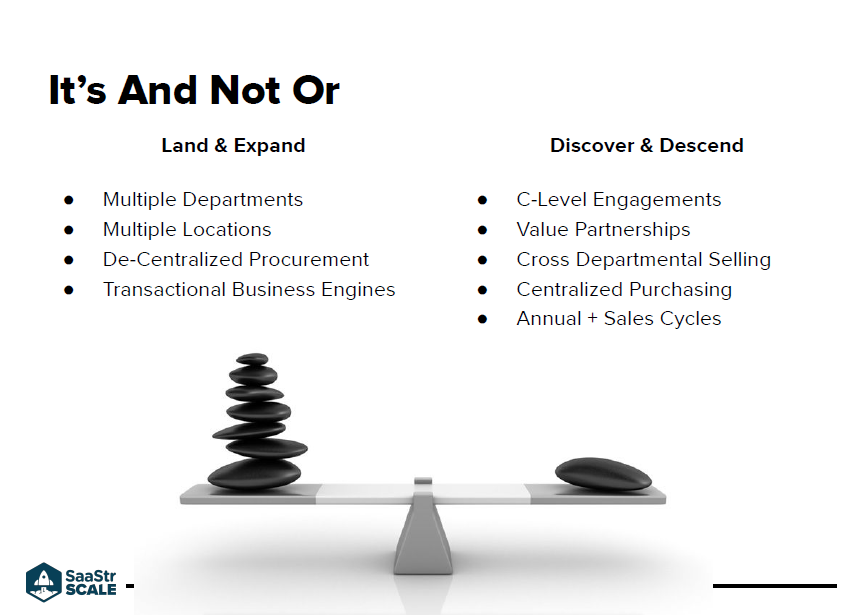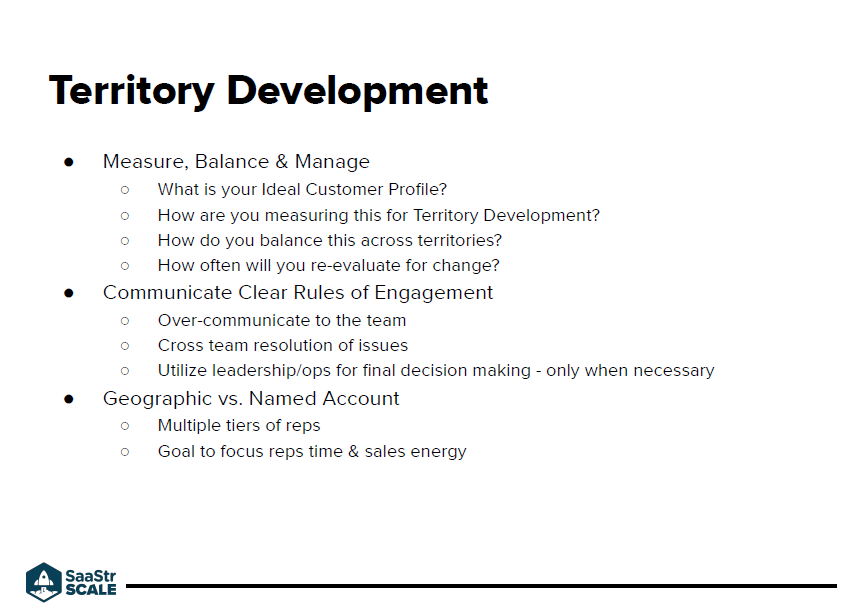Having learned from thousands of customers and prospects, Sarah Lash, Envoy’s head of enterprise sales, will talk about what it takes to guide and scale enterprise sales programs during an uncertain future.
Successful strategies rely on the ability to land and expand, hire for growth, implement ABM and account planning, and pivot with agility. Watch it on Youtube or keep reading for a summary.
Metrics That Matter
In my first six months at Envoy, I grew the sales team from six to 17. It was a critical metric for us because when I started we were at -15% quota capacity. Now we’re at 15+% quota capacity.
It’s essential to have the right folks in the right places, ready to conquer all those opportunities. Here’s how I did it.
Want more? Enter your email below for the latest SaaStr updates
Combine Strategies To Drive Sales
I encourage my sales reps to get to a quota of 70-80% on one-rate deals. This strategy, called Land and Expand, penetrates multiple departments and multiple locations and forms a transactional business engine.
But this is not fully scalable as you move forward. Adding C-level engagements and cross-departmental selling will lengthen your sales cycle but it will provide you with customers who stick and an increased average transaction size. With a smoother quarterly attainment from Discover and Descend overlaying the chunkier deals from Land and Expand, reps can then get to 100% and sometimes above that quota.
Often sales reps are good at one aspect of the job and not the other. Our role as leaders is to onboard, train, and use whatever methods possible to get the team excelling at both. For growth and scale, aim at optimizing for both these strategies
Hiring For Growth
I’ve been in tech for 20+ years and have run tens of thousands of recruitment interviews. I love the feeling within the first five minutes of meeting someone when you know you’ve found the perfect match.
Here’s what to keep in mind when you’re hiring for growth.
- Current Needs
- Backfilling with success
- Pipelining candidates
- Mid Term Needs
- Risk tolerance
- Retention Programs
- Future Needs
- Recruiting above current talent needs
Hiring for growth often looks like hiring for retention. Are you coaching, developing, and showing the existing team that you’re committed to their growth and their career?
When you’re growing your team, think about what future leaders you might need. You need to have the people already in place when you’re looking to hire for senior account management.
This is why I maintain a network of suitable potential candidates. I actively diversify my network via meetups, introductions, and asking for referrals. I do a lot of coaching and mentoring. If anyone reaches out to me on Linkedin I try to email or call them.
When growing a business, you’re never going to find the perfect candidate for every role, but you can still find people who can grow into that role, even if they don’t have the necessary SaaS experience.

Account-Based Planning
Once you’ve got a great team in place it’s time to think about how you can be strategic with those team members. It shouldn’t just be the account executive thinking about what needs to happen with the account moving forward. A joint strategy is essential for account-based marketing and planning.
That’s why you need to implement:
- Cross-departmental participation and commitment
- Develop a process that works for the team
- Accountability to review
At Envoy, I target strategic account planning for expansion accounts. I set up AR targets and goals, such as how many account plans each representative needs to do. These need to be tracked, measured, monitored, and reviewed to hold ourselves accountable.
Territory Development
You can’t measure, balance, or manage if you don’t know what you’re looking for. You need to understand the market and your customer profile thoroughly. But remember that no data is perfect. Choose your single source of truth for your data and don’t waiver from it.
- Measure, Balance, and Manage
- What’s your ideal customer profile?
- How are you measuring this for territory development?
- How do you balance this across territories?
- How often will you re-evaluate for change?
- Communicate Clear Rules of Engagement
- Over-communicate to the team
- Cross-team resolution of issues
- Utilize leadership for final decision making when necessary
- Geographic vs. Named Account
- Multiple tiers of reps
- Goal to focus reps time and sales energy
Leadership And Communication
It’s important to work for a business whose values align with yours. I’m an over-communicator who leads with integrity and loves to have fun. These values have helped me fit right in at Envoy.
Being open about your leadership style helps you communicate with your team and position them in a positive learning environment. Being in alignment with your company’s values makes this easy to do.
Key Takeaways
- It’s top-down AND bottoms-up selling – not one or other.
- Recruiting is important, as is the ongoing coaching and development of your team for retention.
- Know your market and customer, structure your team and communicate with them.
- Your vision and values drive it all together.
Growing a sales team can be a bit of a balancing act. There’s a high rate of turnover, so you’ve got to build your own network of potential clients while managing and developing your existing team.
But if you can get the right folks in the right places then your company will be ready to start seizing those chances.



